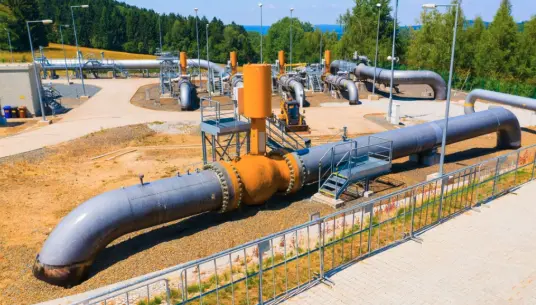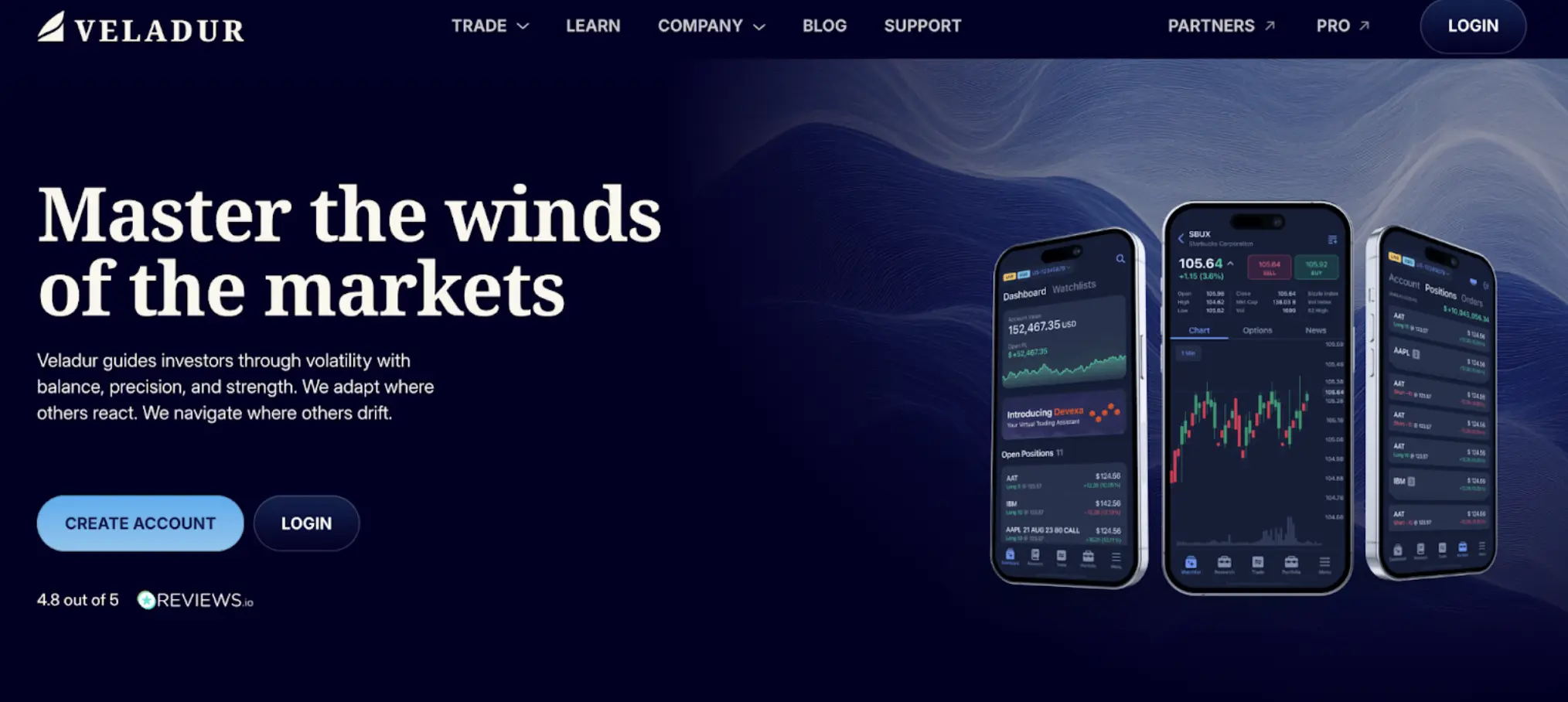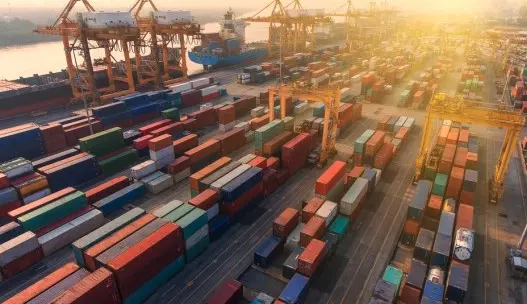At a glance
- China's shipbuilding market share has grown from less than 5% in 1999 to more than 50% in 2023.
- China controls 95% of shipping container production and 86% of the world's supply of intermodal chassis. This dominance by China could displace foreign firms, reduce competition, and create dependencies.
- As a result, the US Trade Representative (USTR) is proposing to introduce fees and restrictions on maritime transport services.
- But US importers will bear the brunt of new fees on Chinese carriers and ships if they come into effect.
- These proposals set in motion the bigger threat of a new trade war: not limiting punitive action to actual goods trade but targeting every item on Trump's never-ending wish list.
- This puts global supply chains and investor confidence at risk.
New target acquired: curbing China's dominance in shipping
Every weekend seems to bring new investigations and actions from the US. On 21 February, two memoranda were released: one focused on America's investment policy, and the other on foreign governments' extraterritorial authority over American companies, such as digital services taxes (DSTs) from countries like France, Austria, Italy, Spain, Turkey, the United Kingdom, and Canada.
The US administration may impose tariffs in response to these findings, which will be detailed in reports due on 1 April. However, one investigation stands out: the proposed actions targeting China's dominance in maritime logistics and shipbuilding, also released on 21 February, could result in significant fines and unprecedented restrictions on the shipping industry.
While the 'Jones Act' (1920), which mandates the use of US-built vessels for direct shipments between US ports, is well-known, this new investigation addresses a different aspect given Asia's dominance.
Proposed fees and restrictions to curb China's dominance in the maritime, logistics, and shipbuilding sectors
In this ongoing investigation from the Biden administration, the US Trade Representative (USTR) is currently seeking public comments until 24 March. Afterward, the findings will be submitted to the President, who will decide whether to take action. The investigation began in April 2024 following a petition from several labour unions, which highlighted China's efforts to dominate the maritime, logistics, and shipbuilding sectors.
According to the USTR's findings, China's shipbuilding market share grew from less than 5% in 1999 to more than 50% in 2023. Additionally, China's ownership of the global commercial fleet increased to more than 19% by January 2024, and the country controls 95% of shipping container production and 86% of the world's supply of intermodal chassis. This dominance by China could displace foreign firms, reduce competition, and create dependencies. As a result, the USTR proposes implementing fees and restrictions on maritime transport services.
Proposed fees:
- Up to $1m per vessel for Chinese maritime transport operators’ entrance to a US port, or up to $1,000 per net ton of the vessel's capacity.
- Fees are based on the percentage of Chinese-built vessels in the fleet, ranging from $500,000 to $1.5m per vessel entrance.
- Additional fees for operators with prospective orders for Chinese vessels based on the percentage of vessels ordered from Chinese shipyards, ranging from $500,000 to $1m per vessel entrance.
- Refunds of up to $1m per entry for operators using US-built vessels instead.
-
Restrictions on services:
- The percentage of US goods required to be transported on US-flagged vessels shall increase gradually, starting at 1% and reaching 15% over seven years
- US goods are to be exported on US-flagged, US-built vessels, with exceptions if the maritime transport services demonstrate that at least 20% of US products, per calendar year will be transported on US-flagged, US-built ships.
- The US administration might also start negotiations with allies to counteract China's policies and reduce dependencies on China in maritime, logistics, and shipbuilding sectors.
Our view: US importers will bear brunt of new fees on Chinese carriers and ships
According to Linerlytica, about 17% of the container vessels calling at US ports are Chinese-made, but when it comes to ultra-large container carriers covering transpacific traffic it’s likely higher. The proposed actions would pretty much exclude major Chinese container carrier Cosco from calling at US ports (all large container carriers are based in Asia or Europe anyway).
This means that a significant portion of imports entering the US via ports would be directly subject to hefty fines, as these additional expenses would likely be passed on from the carrier to shippers and, ultimately, to importers and exporters. And if we look at the huge total orderbook of new more efficient vessels, carriers ordered more than 60% with Chinese shipyards. This means China's dominance is set to rise over the next few years.
Chinese shipyards will supply the majority of new merchant ships coming online in the near term
Orderbook for new seaborne merchant vessels to country, in %, February 2025

Considering that fees would also apply to Chinese-built vessels in any fleet calling at a US port, the share of goods impacted is likely to be even higher and limits re-routing opportunities. This would lead to large inefficiencies for the shipping industries and raise freight rates and costs for shippers.
US shipbuilding industry needs to come a long way and isn't ready to take-over
Just over 4% of the total global merchant fleet is originally built in the US, predominantly consisting of smaller and older vessels. Only a handful of the global order book of 5,600 vessels is placed with US shipyards. The US shipbuilding industry lacks the capacity to construct the new generation of large container ships, tankers, or bulk carriers. Additionally, this would significantly increase new build costs and pose challenges in sourcing the necessary workforce. While increasing the number of ships sailing under the US flag could be a reasonable goal, it is closely tied to legislation and may require a different approach.
China shipbuilding industry could take a hit if buyers turn elsewhere
At this point, it's too early to gauge the impact on China's shipbuilding sector due to the high level of uncertainty surrounding the implementation of such a plan. As seen during the early days of Trump's administration, many measures could serve as bargaining chips rather than actually being enacted.
The threat of US fines alone is unlikely to disrupt China's shipbuilding industry, given its advantages in lower production costs and strong domestic demand.
However, such a policy could dampen one of China's promising export growth areas. In 2024, China's ship exports surged by 56.6% year-on-year to $43.4bn, making it one of the fastest-growing export categories. If buyers shift away from Chinese shipbuilders to avoid this risk, the rapid growth rate could be hindered, dealing another blow to China's exports. This demand is more likely to be redirected to other Asian economies like South Korea and Japan rather than the US.
Overall, while China's shipbuilding sector is growing, it is not a particularly significant contributor to economic growth. In 2024, ship exports accounted for around 1.2% of total exports and approximately 0.2% of GDP.
Global supply chains and investor confidence at risk due to the never-ending wish list
With the Trump administration's proposed actions, the America First policies extend well beyond trade, including investment, technology, and foreign and domestic companies relying on Chinese-operated companies. This sets in motion the bigger threat of a new trade war: not limiting punitive action to actual goods trade but targeting every item on a never-ending wish list.
The ripple effects will impact global supply chains, investor confidence, and international relations, creating even more uncertainty further on, as businesses grapple with enduring low arrival reliability with potential new disruptions and increased costs.



















































































